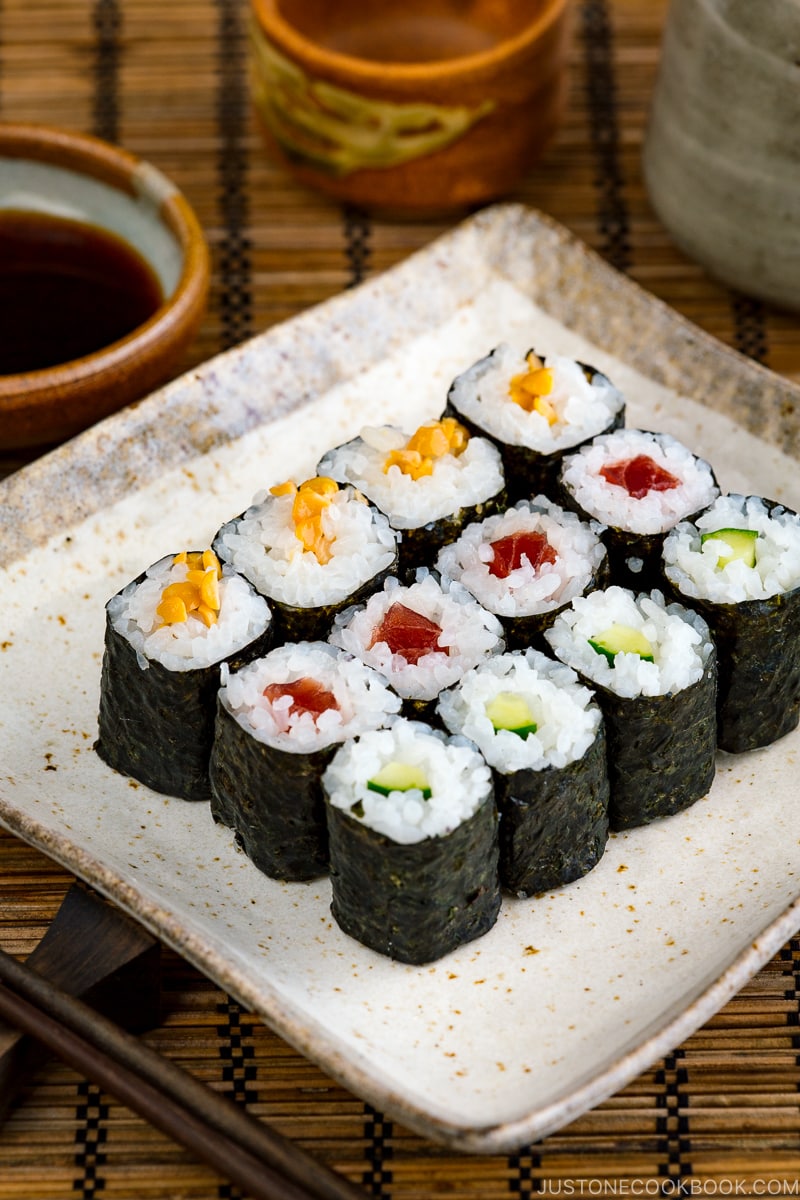The Joyful Introduction to Sushi for Kids: A Parent’s Guide
Welcome, sushi-loving parents! Are you eager to share the flavorsome world of sushi with your little ones but unsure where to start? Fear not, as this guide is here to turn your concerns into confidence. Diving into sushi can be both a nutritious and fun experience for children, and with a sprinkle of creativity, it can easily become their new favorite. Here’s how you can embark on this culinary adventure together!
Understanding Sushi: Basics for Beginners
Before turning your dining table into a sushi bar, it’s important to understand what sushi is all about. Sushi is a traditional Japanese dish that includes vinegared rice combined with various ingredients such as vegetables, seafood, and occasionally tropical fruits. It comes in different forms and flavors, making it a versatile choice for picky palates.
Types of Sushi Suitable for Kids
- Maki: Rolled sushi with rice and fillings wrapped in seaweed, perfect for tiny hands to hold.
- Nigiri: A slice of fish or other toppings over a mound of rice, simple and less adventurous for first-timers.
- Temaki: Cone-shaped hand rolls that make eating sushi fun and interactive.
- Uramaki: Rice on the outside and seaweed on the inside, often with appealing fillings like avocado or cooked fish.
Health Benefits of Sushi for Children
Introducing sushi to your child’s diet isn’t just a culinary exploration; it’s a health investment too. Many ingredients used in sushi are packed with essential nutrients:
- Omega-3 Fatty Acids: Found in fish, these are vital for brain development and overall health.
- Protein: Seafood provides high-quality protein important for growing bodies.
- Vitamins and Minerals: Vegetables like avocado and cucumber add a rich variety of nutrients.
Moreover, sushi can be a delightful way to teach kids about balanced eating habits through its combination of grains, proteins, and vegetables.
Is Sushi Safe for Kids?
One of the biggest questions parents have is about the safety of sushi, particularly the raw fish component. Sushi that is properly prepared following all safety standards reduces the risk of foodborne illnesses. It’s important for parents to:
- Choose reputable sushi restaurants that are kid-friendly.
- Opt for fully cooked or vegetarian options if concerned about raw fish.
- Consult with a pediatrician before introducing raw fish, especially for children with food allergies or compromised immune systems.
Kid-Friendly Sushi Options
You don’t have to jump straight into exotic fish flavors. Starting with familiar tastes can win over your little ones. Here are some beginner-friendly options:
- Cucumber Rolls (Kappamaki): A simple yet refreshing choice.
- California Rolls: Made with crab stick, avocado, and cucumber, and often a favorite among children.
- Tamago Sushi: Sweet egg omelet on rice, a gentle introduction to sushi’s unique textures.
- Tempura Rolls: Fried shrimp or vegetables add a comfortable crunch.
Additionally, getting kids involved in the sushi-making process can make them more excited to try their culinary creations.
Remember, introducing your children to sushi is not just about feeding them a meal; it’s about embarking on a journey of cultural exploration and taste education. Stay tuned for more details in the upcoming sections as we delve deeper into creating enjoyable sushi experiences for the whole family!

Five Things Parents Should Know When Preparing Sushi for Kids
1. Start with High-Quality Ingredients
Quality is key when it comes to sushi. Ensure that all seafood, especially if you’re using raw fish, is fresh and sourced from reputable suppliers. Fresh vegetables and premium sushi rice are also essential for a pleasant taste and texture that kids will love.
2. Keep it Simple and Familiar
It’s best to start with simple sushi recipes that have ingredients your children are already familiar with. Avoid overwhelming them with strong flavors or too many new foods at once. Ingredients like cooked shrimp, crab meat, and veggies are great starting points for a kid-friendly sushi experience.
3. Ensure Cleanliness and Safety
Maintaining a clean workspace and practicing proper food handling are crucial. Always wash your hands thoroughly before beginning sushi prep. Use separate cutting boards and knives for raw seafood and vegetables to prevent cross-contamination. If using raw fish, be sure to freeze it first to kill any parasites, following FDA guidelines or local health regulations.
4. Creativity in Presentation
Children eat with their eyes first! Making sushi visually appealing can pique their interest. Use colorful ingredients, arrange rolls in fun patterns, or cut them into bite-sized shapes. You can even use cookie cutters to turn sushi rice into hearts, stars, or their favorite characters.
5. Involvement in the Process
Getting kids involved in making sushi can be a wonderful bonding activity and can increase their willingness to try new foods. Assign age-appropriate tasks such as washing vegetables, stirring rice, or even rolling their sushi (with supervision). This hands-on experience will make them more likely to enjoy their sushi creations.
As you prepare sushi at home or explore the vast array of sushi in restaurants, keep in mind these tips to ensure a fun and positive introduction to this Japanese delicacy. With patience and enthusiasm, your little gourmets may soon develop a love for sushi that lasts a lifetime. Happy sushi adventures!
For more insights and tips, continue reading this guide as we dive further into the delightful world of sushi for kids. Up next, discover the art of making sushi at home with kid-friendly recipes and safety tips to make your kitchen feel like the best sushi spot in town! Stay tuned and get ready to transform family mealtimes with a pinch of sushi magic!
For more great articles please see here. For more information see here
Disclaimer
The articles available via our website provide general information only and we strongly urge readers to exercise caution and conduct their own thorough research and fact-checking. The information presented should not be taken as absolute truth, and, to the maximum extent permitted by law, we will not be held liable for any inaccuracies or errors in the content. It is essential for individuals to independently verify and validate the information before making any decisions or taking any actions based on the articles.




